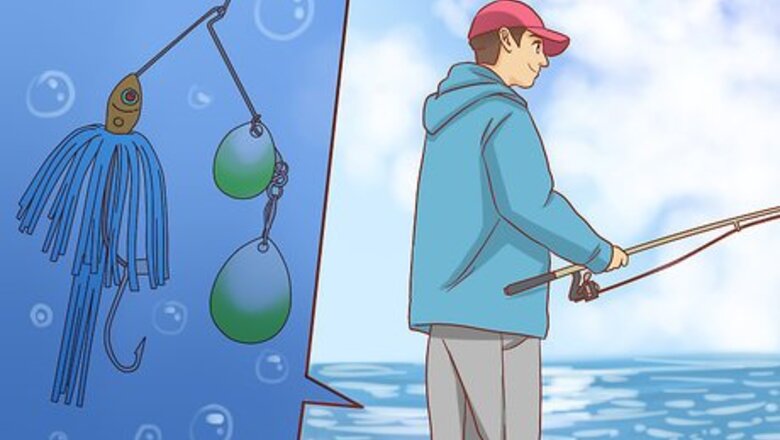
views
Choosing a Spinnerbait
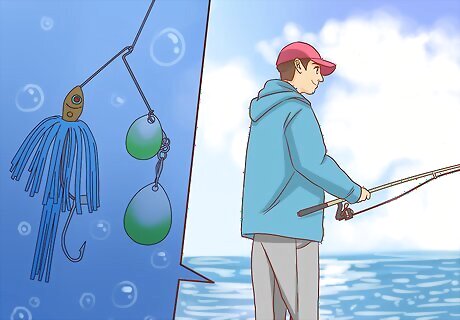
Fish a Colorado spinnerbait if you’ll be in murky or dark water. Colorado spinnerbaits have large, heavy spinners, which produce vibrations that fish can feel for some distance around the bait. These spinners are ideal for fishing in murky water with low visibility or in deep water. Also use Colorado spinners if you’re fishing at night.
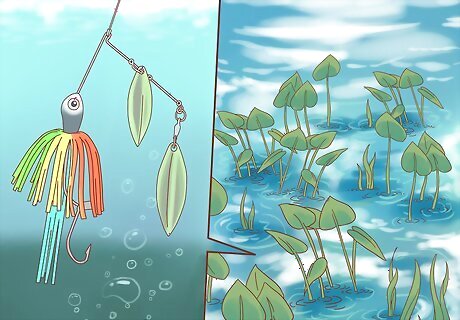
Select a willow-leaf spinnerbait if you’re fishing over thick vegetation. This type of bait is great for fishing in heavy underwater brush, since the small, slim spinners are less likely to get caught up in the vegetation than the heavy blades of a Colorado spinner. They’ll also produce enough flashes and shimmers of light that fish can see them through thick vegetation. To modify the amount of flash your blades put out, you can also purchase spinner blades of different colors.
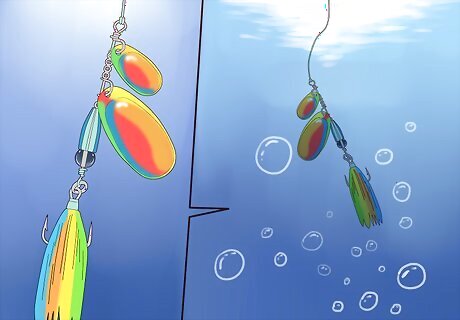
Use a tandem spinner to keep the bait high in the water. Bait tandem spinners will produce twice as much light as a single-spinner bait, and increase the likelihood of a bass being drawn to your bait. The extra lift will keep the spinnerbait near the surface of the water, which is the optimal position for bass bait. A tandem spinner is also useful if you’re fishing in heavy brush. Even if one of the spinners gets snagged in brush, the second spinner will continue to spin and send off light.
Setting Up a Spinnerbait
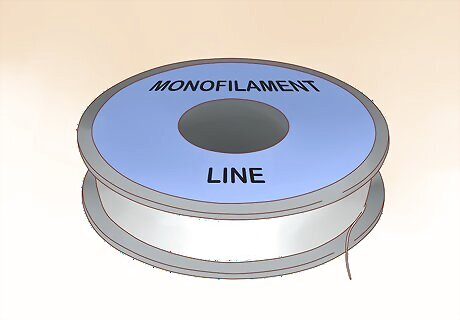
Fish the spinnerbait with a light monofilament line. A light line will allow you to cast the spinnerbait far out into the lake where you’re fishing, and will let you reel the bait back in quickly. If you’re fishing for bass, select a 12- or 14-pound monofilament line. You can purchase fishing line—as well as all of the other tackle you’ll need—at an outdoor supply store.
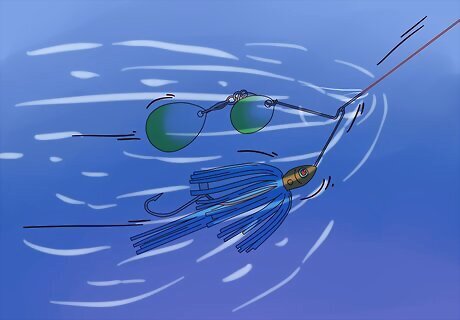
Attach a bright, fast-moving lure to draw in fish. It’s important that you attach the right type of lure to the spinnerbait. A bright color will catch the fish’s eye and draw them towards the lure and bait. The lure should also be relatively lightweight, so that it can move through the water quickly as you’re reeling it in. The quick motion will keep the bass chasing after the lure. Green, blue, and yellow are all good options for bright-colored fishing lures.

Attach a trailer hook to the spinnerbait’s hook. Most spinnerbaits already have 1 relatively short hook built in. To increase the bait’s likelihood of catching a bass, attach a free-swinging trailer hook to the center of the primary hook’s curve. The trailer hook will catch any fish who strike at the lure from a large distance and wouldn’t be caught by the primary hook. You can also attach the trailer hook facing the opposite direction from the primary hook. This is called “reversing” the trailer hook, and may increase your odds of catching a fish.
Fishing the Spinnerbait in an Ideal Location
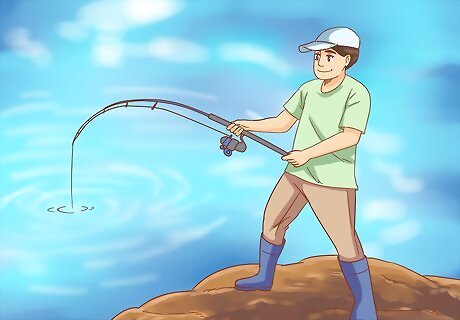
Fish the spinnerbait near a bluff or shoreline. You’re most likely to catch bass near the shore, and the spinnerbait works most effectively in this location. Bass spend the majority of their time feeding and resting near the shore. A bluff has the added perk of providing shade, which decreases the fishes’ ability to tell that the bait isn’t a real fish. So, by casting the spinnerbait in this type of location, you’re likely to attract the attention of any number of bass. You may have some luck throwing the spinnerbait in the middle of open water. However, your chances of hooking a fish will be much higher near a shoreline or bluff.
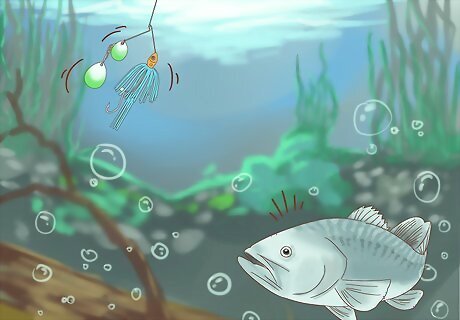
Fish the spinnerbait in clear water. In order for a spinnerbait to lure in bass, the fish need to be able to see the bait from the bottom of the water. If the water is dark or murky, the bait will be largely ineffective. Scout a good fishing location by trawling around a lake and peering down through the water. If you can see the bottom, you can fish the spinnerbait. In clear water, the spinning bait will catch bass’s attention and can draw them in from large distances.
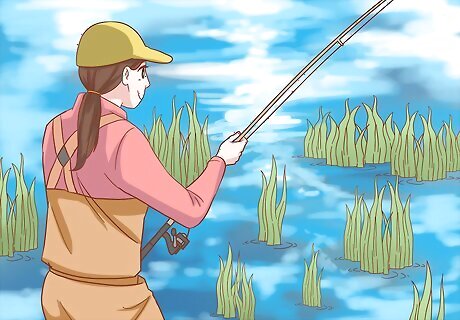
Select a location with underwater vegetation. Bass often hunt for food and rest in underwater grass. Spinnerbaits work well in this type of environment, since they create vibrations and flashes of light in the water which will draw bass out from their hiding places. Trawl around the lake until you find a thick patch of vegetation near the shoreline. Be aware that it can be tricky to find a fishing spot with both clear water and vegetation. It’s fine to settle for a location that only meets 1 of those conditions.
Casting and Reeling in the Spinnerbait
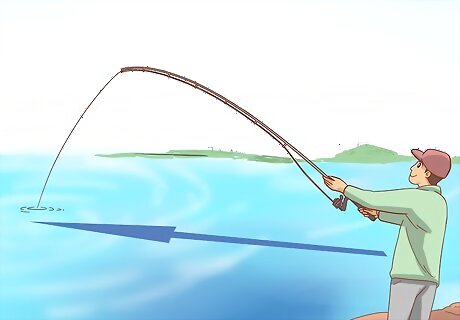
Cast from about 30 feet (9.1 m) away from the shore. Give yourself plenty of space to cast out the bait. Cast the bait towards the shore (or parallel to the shore, depending on your boat’s position) and quickly reel the line back in. Reeling in the spinner over a distance of 30–40 feet (9.1–12.2 m) will give the metal plates time to spin and catch the sunlight, and should draw in bass from the surrounding water. If you position your boat too close to the shore, you won’t catch the attention of many bass as you reel the bait back in.
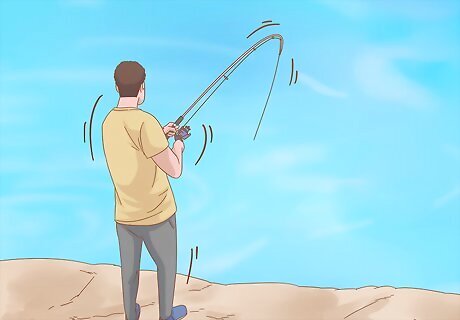
Reel in the spinnerbait parallel to the shoreline. Position your boat so that, as you reel the spinnerbait back in to your rod, the bait will drag through the water along the shoreline. As you reel in the bait, it will stay over the fishes’ location and maximize the number of strikes on the bait you’ll receive. If you draw the spinnerbait directly out into open water, the bass are less likely to follow and strike at the bait.
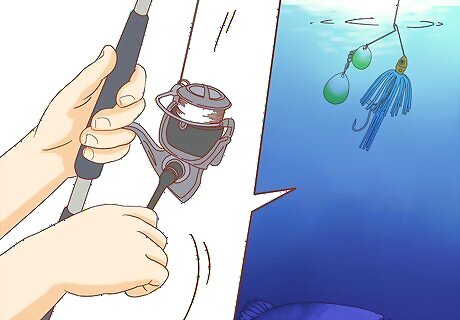
Draw in the bait quickly to keep the spinners high in the water. A spinnerbait works best when it’s near the surface of the water and forces fish to look up at it. The spinners will catch the sunlight most effectively in this position, and this will lead to a large number of strikes on the bait. As you’re reeling, if you notice the spinnerbait slipping lower in the water, accelerate the speed of your reel. If the spinnerbait sinks lower than 2 feet (0.61 m) in the water, fish will not see the spinners glinting with sunlight, and they’ll be less interested in striking the bait.













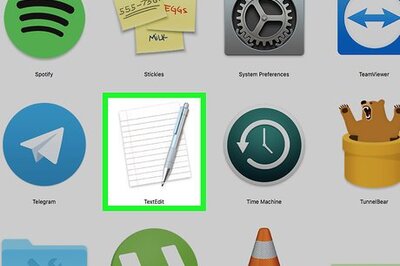

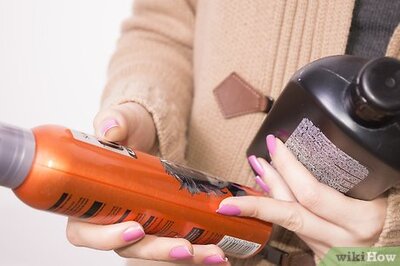


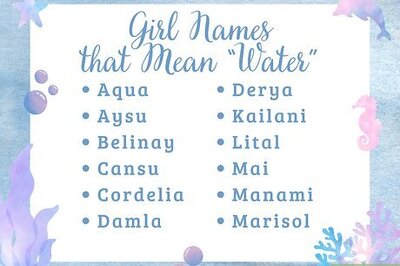
Comments
0 comment